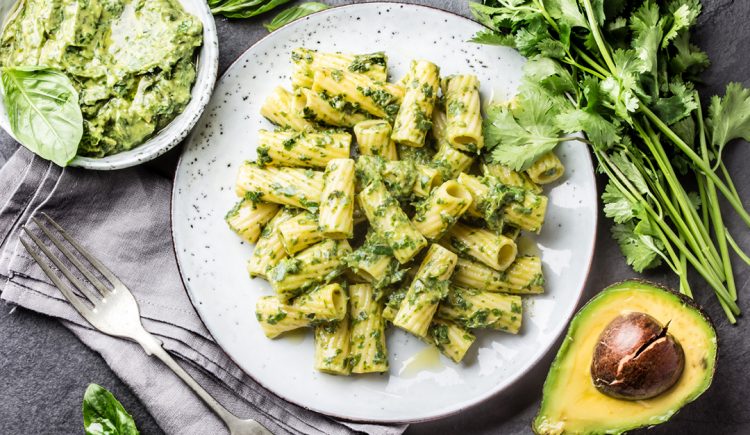(TNS)—One year into the pandemic, professional chefs around America have pivoted as much as almost any other industry professional. They’ve become grocers and style-setters and private club operators and ghost kitchen conjurers.
They’ve also become much better, more sympathetic home cooks.
Take David Kinch, whose restaurant empire includes the Michelin three-star Manresa in Los Gatos, California, and who has pivoted to mail-order bread for the time being. The chef had a 2021 cookbook in the works pre-Covid, but it was centered around parties he’d throw from a pro cook’s perspective. The pandemic inevitably prompted changes, with Kinch tossing in more first-hand experience from time spent in his own kitchen.
“The working title of the book was Tuesday Nights Off, but that became obtuse with people stuck in their houses,” says Kinch.
The book became “At Home in the Kitchen: Simple Recipes From a Chef’s Night Off” (Penguin Random House; $35) out Mar. 23. With co-author Devin Fuller, Kinch shares go-to recipes with attitude.
His grilled cheese is made with both Gruyère and tallegio and refrigerated with a weight on top before cooking to compress the resulting sandwich (he keeps some in the fridge for late night snack emergencies). A chapter on condiments and pantry staples features “roast shallots in space” (so named because they are suspended on foil away from the hot pan while they roast). His arsenal of stocks includes chicken, chickpea and parmesan, and he adds pomegranate seeds to guacamole.
“Our mantra for the book was ‘don’t be dogmatic,'” says Kinch. “Each recipe has six or seven ingredients, and you don’t have to order anything from Amazon, which became more important during the pandemic.”
His most irreverent recipe focuses on the most classic of pasta sauces, basil pesto. Kinch has developed an obsession with the Mediterranean facing region of Liguria—he writes that it reminds him of his Santa Cruz home.
“As such, I’ve given my California take on a Ligurian pasta a lot of thought,” he writes in the book. “Along the Italian Riviera, chefs add potatoes and green beans. In California, I add avocados.”
Kinch’s combination sounds like a disaster. In fact, it’s brilliant, like an ominous blind date that leads to love.
The cubes of avocado melt slightly into the pasta which enhances the creaminess and emphasizes the garlic. “Everything works, even the color works,” says Kinch, who got the idea from a Peruvian chef he once met. When you do get the odd bite of avocado, it’s a refreshing and fruity reminder that it’s there in the mix, too. But it’s not overpowering.
If you learn one thing from this recipe, though, Kinch wants it to be pesto. He believes “it’s the greatest sauce in Italian cuisine” and strongly advises people to make their own using a mortar and pestle.
Before he opened his Riviera-inspired restaurant Mentone in Aptos, California, in 2020, he traveled to Italy where he met Roberto Panizza, who he calls “the godfather of pesto.” Panizza, he says, “recounted the heartbreak of watching his grandmother prepare pesto using a blender.”
At the risk of breaking both Panizza’s and Kinch’s hearts, I used a food processor and was delighted with my pesto, which made summer feel even closer than it is. Kinch also reluctantly signs off on using a store-bought version, “as long as you know it’s delicious.”
The following recipe is adapted from “At Home in the Kitchen” by David Kinch and Devin Fuller.
Pasta With Pesto and Avocado
Serves 4
1/2 cup pesto (recipe follows) or your favorite store-bought variety
1 lb. spaghetti, trofie, bucatini or tagliatelle
1 ripe avocado, peeled, seeded and cut into ½-inch pieces
Salt
Finely grated Pecorino Romano, for serving (optional)
Bring a large pot of water to a boil. Add salt to taste.
Scoop the pesto into a bowl large enough to hold the pasta.
Add the pasta to the boiling water and follow the package instructions to cook to al dente.
Just before it’s finished cooking, ladle ¼ cup of the pasta water into the pesto and stir to thin. Don’t worry if the pesto looks too thin: The sauce will thicken from the pasta starch. Reserve an additional 1 cup of pasta cooking water.
Drain the pasta and stir into the pesto, adding some reserved pasta water, if necessary, to get a good consistency on the sauce. When the pasta is coated, gently stir in the avocado. Finish with a pinch of salt. Divide among four bowls and serve immediately, garnishing with Pecorino if desired.
7 Ingredient Processor Pesto
Makes about 2 cups
1 clove garlic
3 tbsp. pine nuts
Flaky sea salt
2 cups lightly packed basil leaves and stems
Half a cup finely grated Parmigiano-Reggiano
Half a cup finely grated Pecorino Romano
About half a cup extra-virgin olive oil
Pulse the garlic, pine nuts, and a pinch of salt in a food processor until a paste forms.
Add the basil and pulse until smooth. Add the cheeses, turn the machine to low and drizzle in the olive oil until the pesto transforms from a paste to a sauce. Use immediately or cover with ½ inch of oil and refrigerate for up to 6 months, or until it’s time to make another batch.
The Right Way to Make Pesto
Cool a mortar and pestle in your refrigerator for at least 30 minutes.
Stir together the half a cup finely grated Parmigiano Reggiano with the half a cup finely grated Pecorino Romano cheese.
In the mortar, mash 1 garlic clove with a pinch of flaky sea salt to form a paste. And 3 tbsp. pine nuts and begin stirring the pestle aggressively to force the ingredients up the sides of the mortar to form a paste. Add 2 cups lightly packed basil leaves in small handfuls, crushing them until no leaves remain. You want imperfection in the leaves.
Add the cheese mixture in small spoonfuls. Slowly add a quarter to a half cup olive oil, stirring and pounding so the pesto transforms from a paste to a creamy sauce.
Use immediately or add half an inch of oil to cover and refrigerate for up to 6 months.
©2021 Bloomberg L.P
Distributed by Tribune Content Agency, LLC











